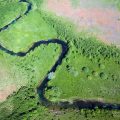Where Rivers Meet the Sea: The Mystical Beauty of River Deltas
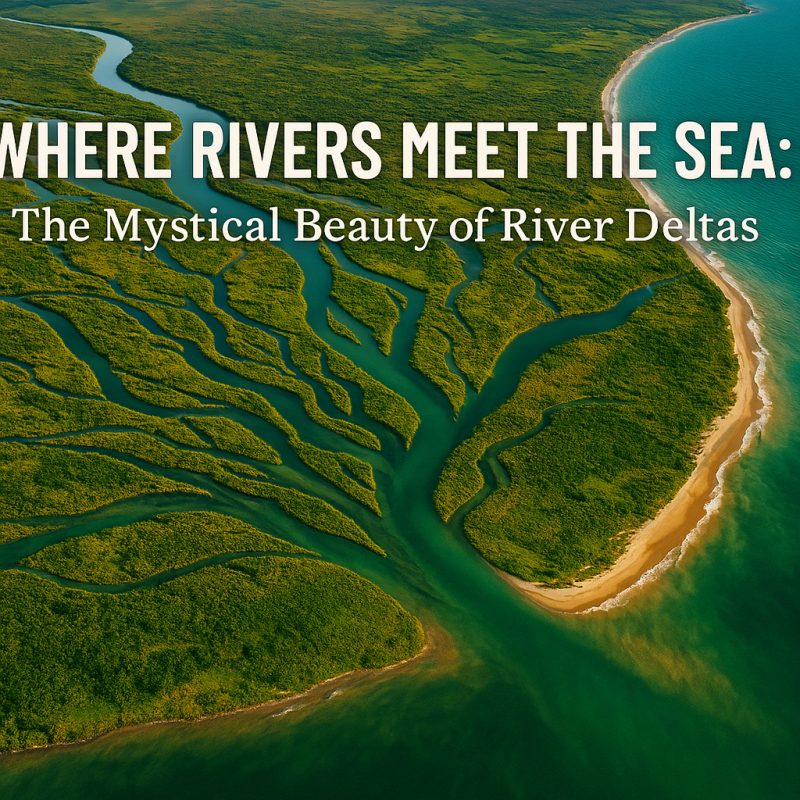
A river delta is nature’s masterpiece—where freshwater meets the sea, creating a lush, ever-changing landscape full of life and transformation.
Most streams ultimately flow into the sea or large lakes, either in the form of a delta or estuary. A river flowing into quiet water usually builds a delta, depositing the sediment at the mouth of a river when the river’s velocity decreases.
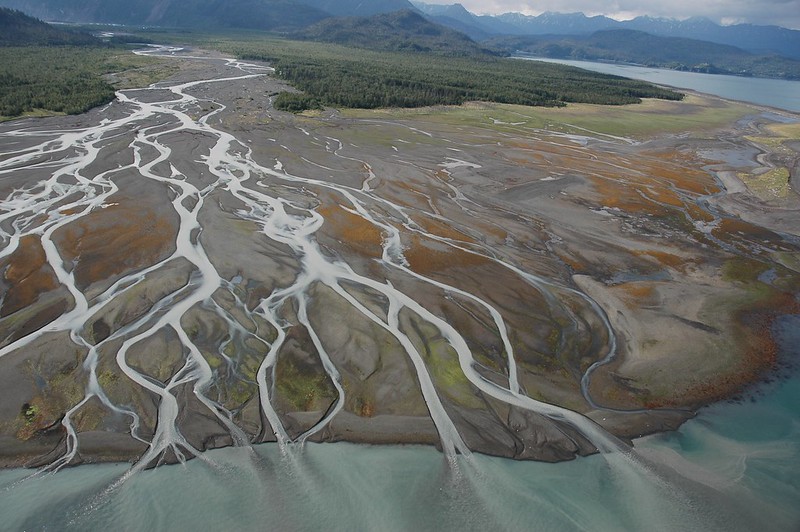
The surface of most deltas is crisscrossed by distributaries— small, shifting channels that branch water away from the main river channel and distribute it over the surface of the delta. Sediment deposited at the end of a distributary tends to block the water flow, causing distributaries and their sites of sediment deposition to shift periodically. The delta, in this way, resembles a braided stream that is found upstream. The larger tributaries likewise resemble a side-arm.
Shapes of River Deltas: Nature’s Artistic Blueprints
Not all river deltas are created equal—some sprawl like open fans, others reach out like bony fingers into the sea. Their shapes depend on the delicate dance between river flow, tides, and waves. Let’s explore the most captivating forms:
Arcuate Deltas (Fan-Shaped)
Like a painter’s brushstroke across the land, arcuate deltas curve gracefully outward in a broad fan shape. Think of the Nile Delta, where the river gently splits and spreads before meeting the Mediterranean. These are typically formed where wave action is strong enough to smooth out the edges.
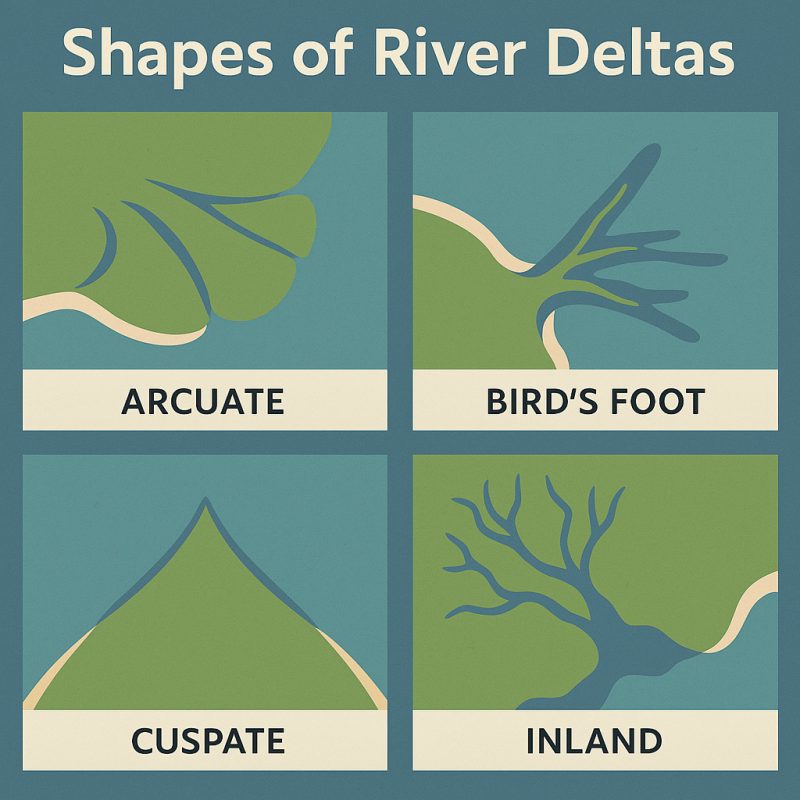
Bird’s Foot Deltas
Imagine a skeletal hand of land pushing into the sea—this is the bird’s foot shape, most famously seen in the Mississippi River Delta. It forms when river sediment dominates over wave or tidal action, creating narrow, finger-like projections.
Cuspate Deltas
Shaped like an arrowhead or a triangle, cuspate deltas are formed where wave energy is strong and evenly distributed, pushing the sediment into a pointed shape. A beautiful example? The Tiber Delta in Italy, which cuts a bold outline against the Tyrrhenian coast.
🏜️ Inland Deltas
Rare and mesmerizing, inland deltas don’t reach the ocean at all. Instead, they spill into deserts or plains, creating lush oases in unexpected places. The Okavango Delta in Botswana is a stunning example—seasonally flooding the Kalahari Desert and attracting elephants, hippos, and flocks of birds.
The Types of Deltas
The shape of a marine delta in map view depends on the balance between sediment supply from the stream and the erosive power of waves and tides. The sediment size and volumes, along with the space in which the delta grows, determines the shape of the delta.
Some deltas, like that of the Nile River, are broadly triangular; this delta’s resemblance to the Greek letter delta (Δ) is the origin of the name.
The Nile Delta or the Danube Delta is a wave-dominated delta that contains barrier islands along its oceanward side. The barrier islands are formed by waves actively reshaping the sediments.
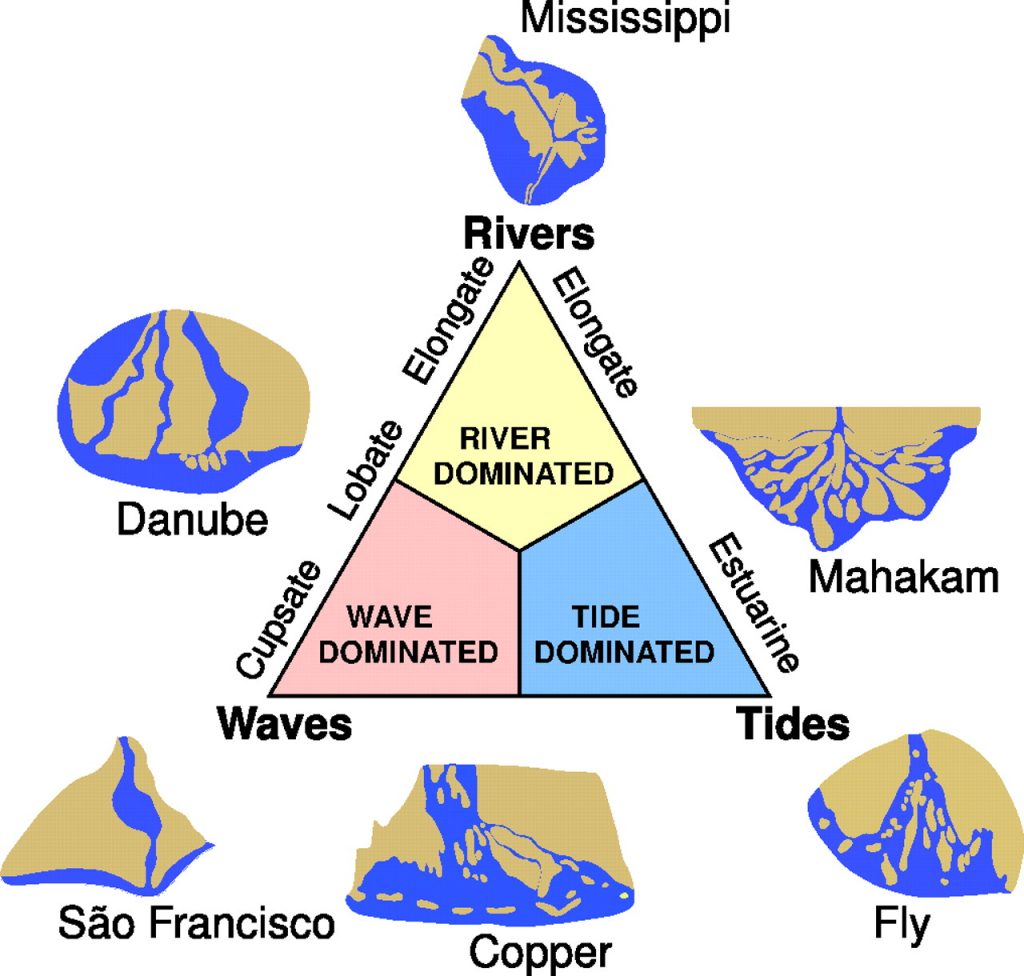
Some deltas on the other hand, form are dominated by strong sea tides, and the sediment is reshaped into tidal bars that are aligned parallel to a tidal current. The Ganges-Brahmaputra Delta in Bangladesh is an excellent example of a tide-dominated delta.
Some deltas have a mixed influence of waves and tides, for example, the Niger River or the Mekong River. They often have multiple distributary channels with beach ridges on the islands in between channels.
Some deltas, including that of the Mississippi River, are created when enormous amounts of sediment are carried into relatively quiet water. Because of the dominance of stream sedimentation that forms the fingerlike distributaries, birdfoot deltas like the Mississippi’s are also referred to as river-dominated deltas (or fluvially-dominated deltas).
Inland Deltas: Where Rivers Disappear Into the Land
Unlike traditional deltas that spill into oceans or seas, inland deltas are rare and magical—spreading out across dry land instead of open water. These deltas occur when a river loses its strength before reaching the sea, creating a lush oasis in the middle of an arid region.
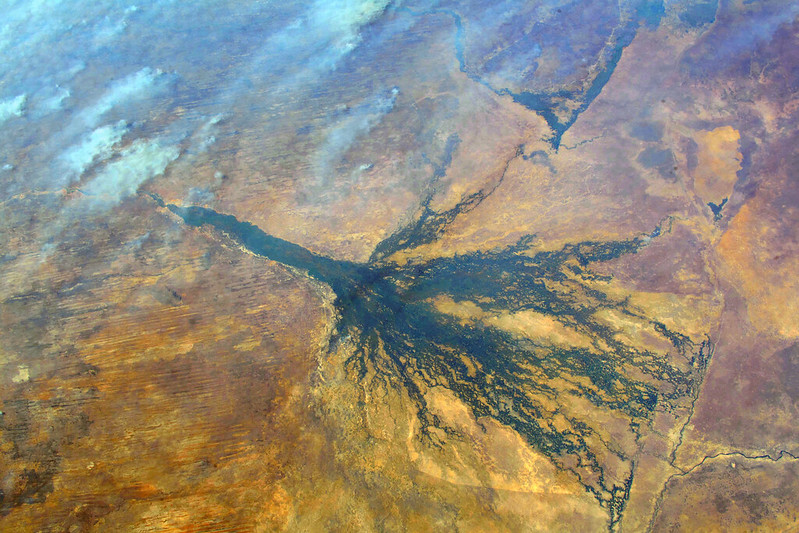
One of the most extraordinary examples is the Okavango Delta—a seasonal miracle where the Okavango River fans out into the Kalahari Desert. Each year, floodwaters from Angola arrive like clockwork, transforming scorched sands into a vibrant wetland teeming with wildlife. Elephants wade through reed-filled lagoons, lions stalk islands of dry land, and thousands of birds flock to this temporary paradise.
The Okavango isn’t just beautiful—it’s a lifeline. So unique is this inland delta that it’s now a UNESCO World Heritage Site and one of Africa’s top safari destinations.
Delta – Everchanging Environment
Deltas are continually changing through time, just as the river changes its morphology upstream. This dynamic in the eternal interplay of the sediment deposition from the river and sea action. Several other aspects dictate the shape, as hydrology. Many deltas are sinking, and seawater is encroaching on once-dry land. The tectonic subsidence and compaction of water-saturated sediment also play an important role.
While freshwater is flowing to the sea, more dense seawater usually flows at the river bottom upstream for some distance, depending on many factors. The halocline is developed, which divides the salt and freshwater environment. This allows different communities of animals and plants to coexist very close.
Deltas, as very diverse habitats that connect freshwater and marine communities, have enormous biodiversity. Many deltas are hatcheries for fishes and other animals. Islands are breeding grounds for numerous birds.

Iconic River Deltas Around the World
From the emerald fingers of the Nile to the maze-like veins of the Mekong, some river deltas are so vast and intricate they seem to defy logic. Let’s journey through some of the most captivating deltas on Earth—each a dynamic masterpiece where rivers surrender to the sea.
The Nile Delta, Egypt
Where the world’s longest river kisses the Mediterranean, the Nile Delta sprawls like an ancient tapestry woven through time. Fertile, flat, and fan-shaped, this delta has nourished civilizations for over 5,000 years. It’s a land of papyrus, palms, and rich silt—a cradle of humanity still pulsing with life.
The Ganges-Brahmaputra Delta, Bangladesh & India
Welcome to the largest delta on the planet. This mighty confluence—sometimes called the Sundarbans Delta—is a sprawling waterworld of mangrove forests, winding channels, and monsoon-fed mystery. It’s home to the elusive Bengal tiger and the rhythmic rise and fall of tides that shape entire villages overnight.
The Mississippi River Delta, USA
Spreading its fingers across southern Louisiana, the Mississippi Delta is a marshy mosaic of bayous, swamps, and wetlands. It’s more than just jazz and jambalaya—it’s an ecological powerhouse, a migratory bird haven, and a front-line witness to rising sea levels and human ingenuity.
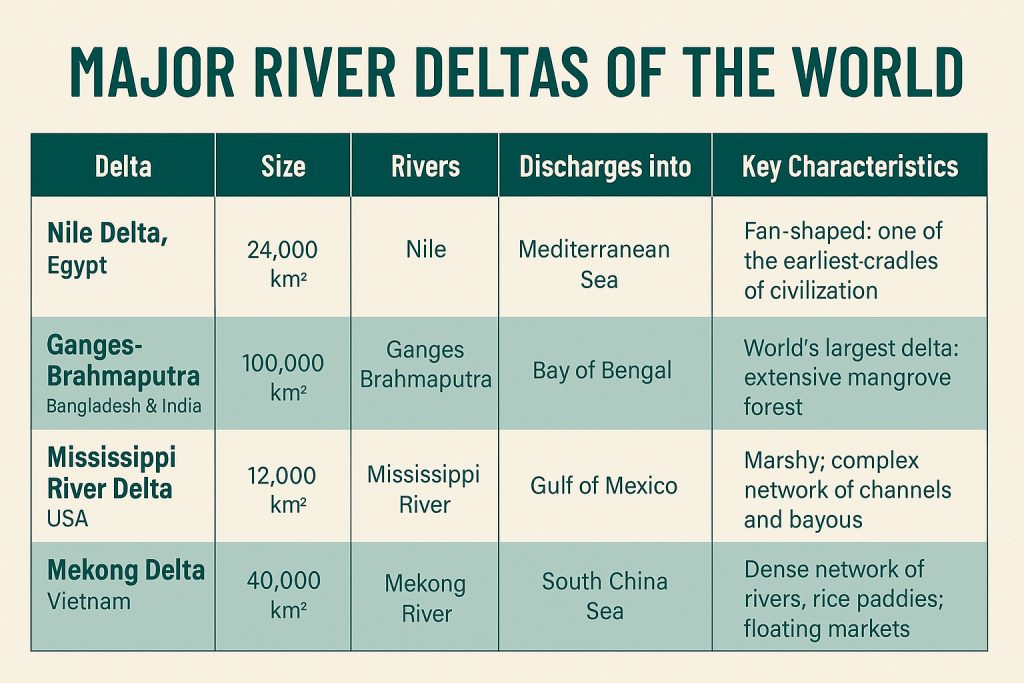
The Mekong Delta, Vietnam
Known as the “Rice Bowl” of Vietnam, the Mekong Delta is a labyrinth of rivers, floating markets, and emerald rice paddies. Life here flows with the tide—boats become shops, homes are raised on stilts, and water is both a livelihood and a way of life. It’s sensory overload in the best way possible.
The Okavango Delta, Botswana
Unlike most deltas, the Okavango doesn’t flow into an ocean. Instead, it fans out into the Kalahari Desert, creating a lush inland oasis that bursts into life each year with the seasonal flood. Elephants wade through lily-speckled lagoons, leopards nap in fig trees, and safari magic unfolds at every bend.
Threats to the Deltas
This natural richness, along with the navigation and commerce value of river mouths, has attracted people from time immemorial. The constant sediment deposition creates the fertile ground for agriculture. Ganges- Brahmaputra Delta is one of the most densely inhabited parts of the world. Even treacherous, the ever-changing environment hasn’t deterred the settlement. Low and flat deltas are threatened by the high waves and raised sea levels due to climate change. Hurricanes and tsunamis often swept these areas.
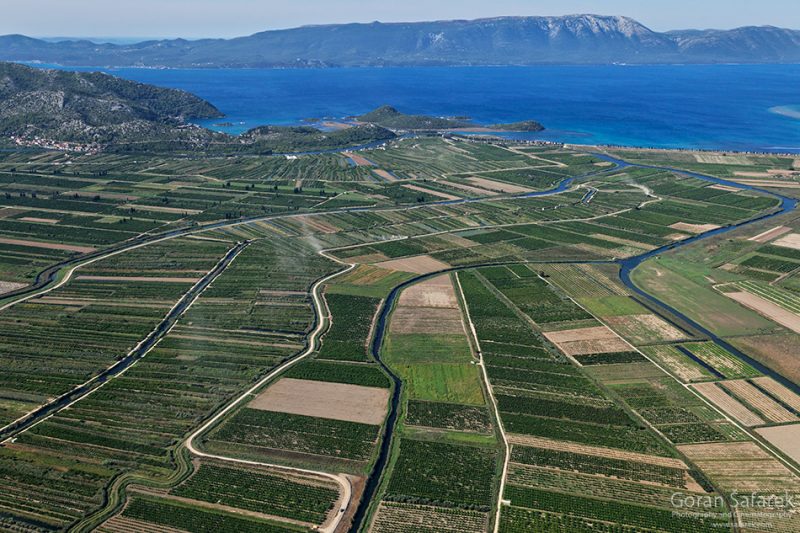
Human pressure has aggravated the natural processes in many deltas. Overhunting and overfishing, pollution, river regulation, urbanization, and loss of habitat, among other influences, have dramatically altered the morphology and ecology of these fragile environments.
Even faraway disturbances often have dramatic effects on deltas. Many deltas are sinking, as upstream dams catch sediment are reducing the delta’s supply. As a result, the water penetrates deeper and further upstream. Dams also divert the water to power plants elsewhere, further aggravating the problem. In the Mississippi River, the extraction of oil and gas from beneath the delta speeds up the subsidence.
Final Thoughts: Where Earth Breathes and Waters Dream
River deltas are more than just geographical features—they are living, breathing landscapes where the heartbeat of a river slows to meet the rhythm of the sea. These delicate intersections of land and water are teeming with life, culture, and history. They feed nations, nurture ecosystems, and paint some of the planet’s most surreal vistas.
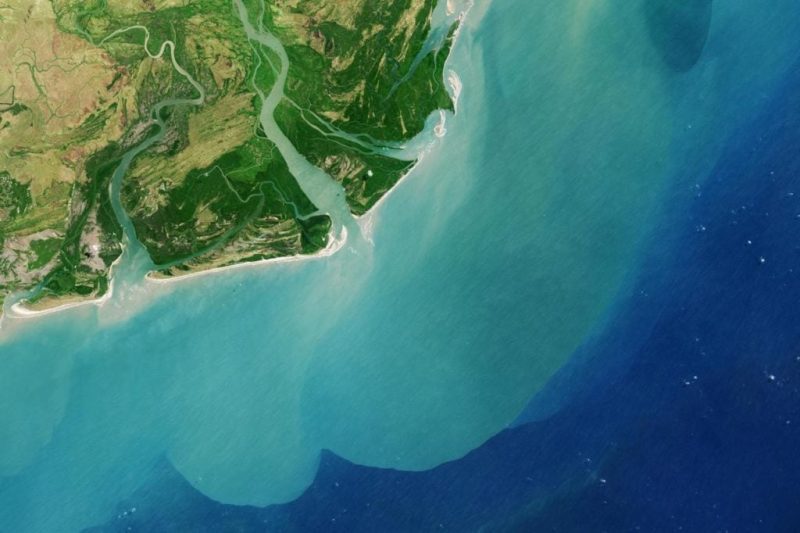
From the thunderous flow of the Ganges to the tranquil sprawl of the Okavango, each delta tells a story of movement, transformation, and rebirth. In a world increasingly shaped by climate change, these watery wonders remind us of nature’s resilience—and our responsibility to protect it.
So the next time you stand at the edge of a river, let your imagination follow it all the way to its final fan-shaped embrace with the sea… and picture the magic of the delta unfolding at the end of its journey.



